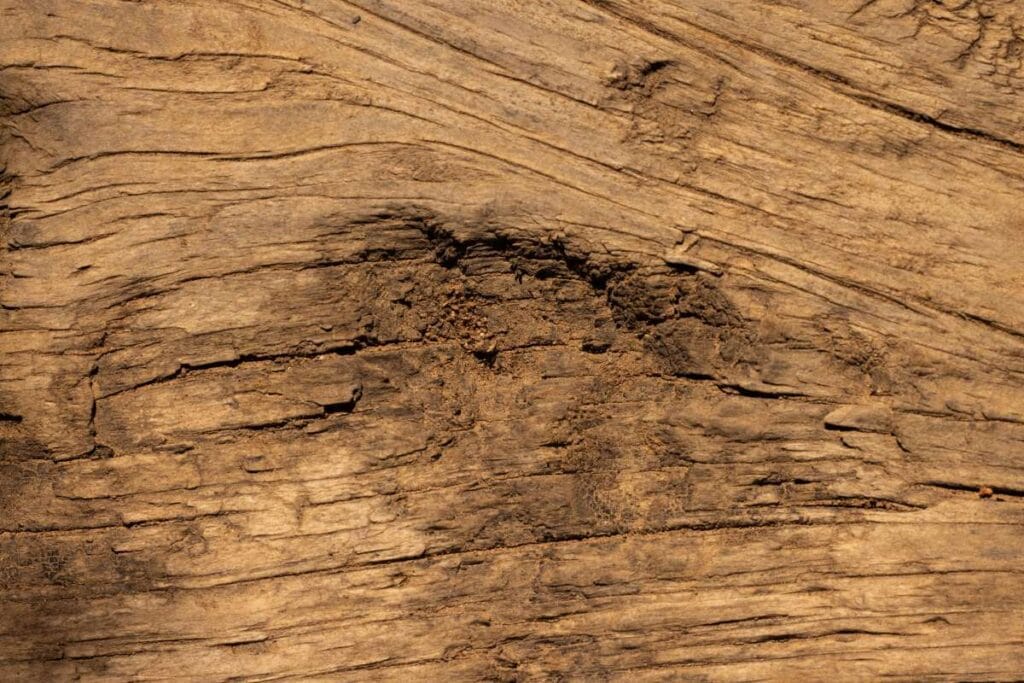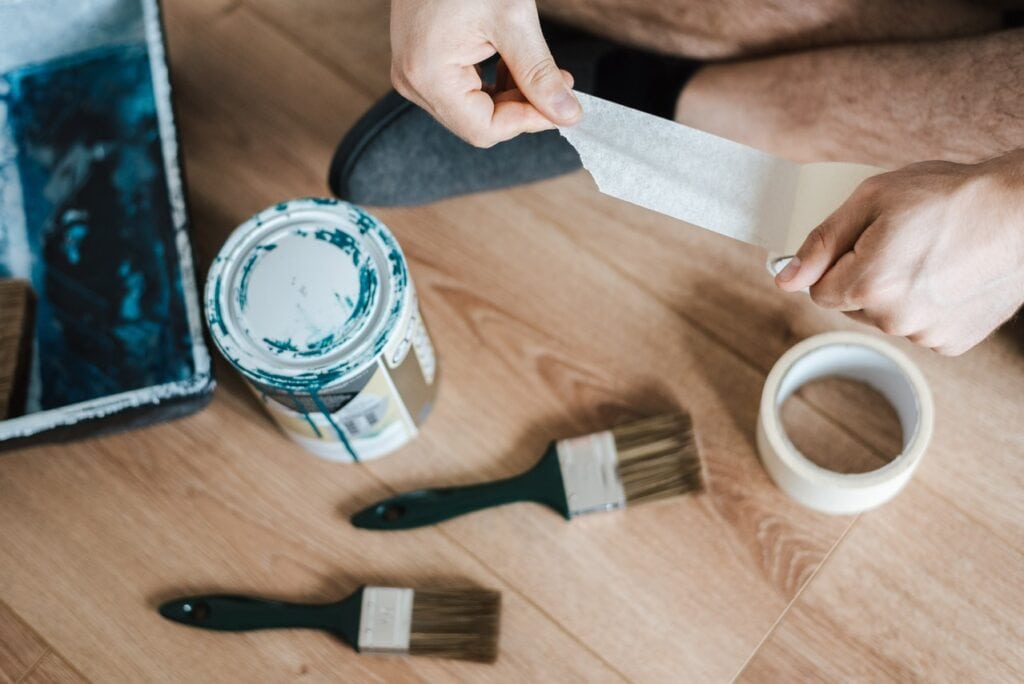Wood is a beautiful, versatile material widely used in home exteriors for its classic aesthetic appeal and natural durability. However, wood can be prone to cracking because it’s a natural material, especially when exposed to outdoor elements like fluctuating temperatures, moisture, and UV rays.
Over time, wood can expand, contract, and weaken, leading to unsightly cracks that can cause more severe structural damage if not properly addressed. This guide will cover effectively filling outside wood cracks to maintain your home’s exterior and enhance its longevity and curb appeal.
Let’s get straight to the point.
Filling cracks in outside wood is essential to maintaining your home’s exterior and preventing water damage, rot, and insect infestations. Start by cleaning, sanding, and drying the area, then choose a suitable caulk, such as siliconised acrylic, for its durability and paintability.
Apply and smooth the caulk, let it cure, and paint for added protection. For larger holes or significant damage, use a two-part filler and follow with sanding and painting. Regular inspections and prompt repairs using quality materials will keep your wood surfaces looking good and protected for a long time.
Importance Of Addressing Wood Cracks In Home Maintenance
Maintaining your home’s exterior isn’t only about aesthetics; it’s also about protecting the structural integrity of your property. Neglecting wood cracks can allow water to seep into the material, which promotes rot, mould, and decay.
During colder months, moisture within these cracks can freeze and expand, worsening the cracks and causing even more damage. Furthermore, unfilled cracks can trap dirt and become breeding grounds for insects, accelerating the wood’s deterioration. Filling these cracks not only improves the look of your exterior but prevents future costly repairs.
Preparing The Area For Caulking And Filling Cracks
A. Clean The Surface
Proper preparation is critical to successful crack filling. Begin by cleaning the wood surface to ensure that the caulk adheres well. Use these steps to prepare the area effectively:
- Scrape Off Old Paint: If the wood is painted, use a scraper to remove any peeling or flaking paint around the crack. This will expose the raw wood surface for better adhesion.
- Sand the Surface: Sand the area around the crack with medium-grit sandpaper. Sanding smooths the edges of the crack, allowing the caulk to fill it more effectively and blend seamlessly with the surrounding surface.
- Prime if Necessary: Applying a wood primer helps seal the wood and enhances the caulk’s adherence, especially if you’re dealing with highly porous or weathered wood.
B. Inspect For Movement
Wood expands and contracts with changes in temperature and humidity, leading to two types of cracks: static (stable) and dynamic (moving). Knowing the difference is essential:
- Stable Cracks: These cracks don’t shift and are easier to fill with caulk, providing a permanent solution.
- Moving Cracks: Avoid filling moving cracks with regular caulk, as it won’t be flexible enough to handle the expansion and contraction. Instead, look for a caulk that is specifically rated for flexibility.
C. Allow Time To Dry
After cleaning and sanding, thoroughly dry the wood surface before applying caulk. Moisture can prevent the caulk from adhering properly, leading to premature cracking and the need for repeated repairs.
Choosing The Right Type Of Caulk For Wood
Selecting the appropriate type of caulk is essential for outdoor repairs. Here are some key considerations:
- Siliconised Acrylic Caulk: This caulk adheres well to wood, can be painted over, and is durable enough to withstand outdoor conditions. It combines the flexibility of silicone with the paintability of acrylic, making it ideal for wood crack repair.
- Colour Matching: For a seamless look, either choose a caulk that matches the wood colour or plan to paint over the caulk once it’s fully cured.

Application Process For Filling Cracks
Once the surface is ready, follow these steps to fill the crack with caulk:
- Cut the Caulk Tube: Use a utility knife to cut the caulk tube’s tip at a 45-degree angle to ensure easy application. Ensure the hole is large enough to fit into the crack or hole.
- Fill the Crack: Insert the tube tip into the crack and gently squeeze the caulk gun handle to fill it. For wider cracks, move the tube slowly along the length of the crack to apply an even bead of caulk.
- Smooth the Surface: Wet your finger or use a caulk-smoothing tool to press the caulk into the crack, ensuring a smooth, even finish.
- Clean Excess Caulk: Use a damp cloth to remove excess caulk around the crack for a tidy finish.
Allow The Caulk To Cure
After filling, allow the caulk to cure fully before painting. The curing time can vary depending on the product and environmental conditions. Always refer to the manufacturer’s instructions, but generally, 24-48 hours is sufficient for the caulk to set.
Painting After Caulking For Added Protection
Painting over caulked areas enhances the appearance and adds a layer of protection to the caulk. Here’s how to get the best results:
1. Preparing For Paint
Once the caulk has cured, lightly sand the area to create a smooth transition between the caulk and the wood. This will also promote paint adhesion. After sanding, wipe away any dust with a damp cloth.
2. Applying Paint
Choose a high-quality, exterior-grade paint to withstand UV exposure, rain, and temperature fluctuations. Apply the paint evenly over the caulked areas, ensuring complete coverage. If needed, apply a second coat after the first has dried for extra durability, especially in high-exposure areas.
Importance Of Proper Caulking Before Painting
Proper caulking is crucial for a lasting paint job and exterior durability. Here’s why:
- Prevents Water Damage: Water can seep into unfilled cracks, causing paint to peel and wood to rot. Proper caulking provides a barrier against moisture, ensuring a longer-lasting paint finish.
- Enhances Aesthetics: Smooth, well-filled cracks result in a more polished, professional look, creating a flawless foundation for paint.
- Increases Longevity: Quality caulking products are designed to withstand outdoor conditions, potentially lasting 30-50 years. This means less frequent maintenance and fewer repairs in the long run.

Regular Maintenance For Wooden Surfaces
Maintaining your exterior wood surfaces with regular inspections and timely repairs is essential to prevent recurring damage. Here are some maintenance tips:
1. Regular Inspections
Check your exterior wood surfaces for new cracks, paint peeling, or signs of rot, especially after seasonal changes. Early detection allows you to address issues before they escalate.
2. Prompt Repairs
Address any cracks or minor damage as soon as you notice them. Quick repairs will prevent moisture infiltration and reduce the chance of more extensive damage. A proactive approach can save time and money over time.
3. Use Quality Materials
Investing in high-quality caulk and paint may cost more initially, but it will ultimately save you from more frequent repairs. Quality materials are formulated to resist UV damage, moisture, and temperature fluctuations, common causes of wood deterioration.
Conclusion
Filling cracks in exterior wood surfaces is a straightforward yet vital aspect of home maintenance that pays off in appearance and structural integrity. By properly preparing, filling, and finishing wood cracks, you can effectively protect your home from weather-related damage and extend the life of your paint job.
Regularly inspecting and maintaining your home’s exterior wood, using the right caulk and filler, and ensuring proper paint application are all steps that will keep your property looking its best while avoiding costly repairs. If you’re unsure about more extensive repairs, consider consulting with professionals like Hitch Property Constructions for advice on weatherboard and exterior wood repair.
With the right techniques and materials, filling and maintaining outside wood cracks can be a manageable DIY project, giving you the confidence and satisfaction of preserving your home’s beauty and longevity.
FAQs About Wood Cracks
Is It Normal For Wood To Crack?
Cracking and checking are normal parts of timber frame buildings, fences, and furniture and rarely result from structural issues. Cracking and checking timber is a natural part of the wood’s life cycle—even once it’s been cut, shaped, and prepared for building.
What Causes Cracks In Wood?
Splits and cracks (known as wood checks in the industry) occur when wood shrinks as it dries. Wood shrinks roughly twice as much along with the growth rings (radially) as it does across the rings (tangentially). This uneven shrinkage causes checks to develop.
Can You Fix Cracked Wood?
Wood putty or wood filler sticks are easy to use and effectively cover wide indoor and unstained wood cracks. A mixture of wood glue and sawdust seamlessly blends in small cracks and gaps in assembled furniture for a quick fix. Purchase epoxy to handle larger gaps, such as on outdoor projects.
How Do You Stop Wood From Cracking?
You can keep wood from splitting by applying a sealant or stabiliser, using a salt paste, applying varnish, applying paintable wax, or applying boiled linseed oil. Those methods will help you to keep wood from splitting when nailing, screwing, drying, cutting, and sawing.
Why Does Wood Crack In Winter?
The humidity of the atmosphere during winter (76%) is significantly higher than in summer (66%). This humidity change causes wood to shrink or expand, and constant shrinking and expansion with seasons cause wood to crack.

